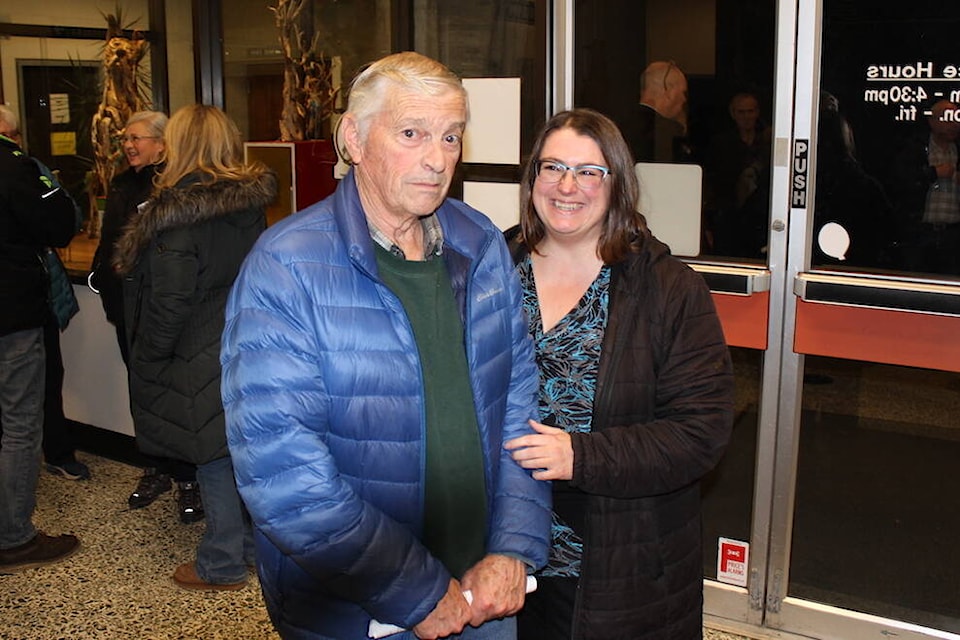The livelihoods of landowners versus the protection of farmland pitted neighbour’s against one another in a somewhat raucous session at Saanich’s Monday (Feb. 5) council meeting.
At stake was the fate of two long-time local farmers’ ability to keep their operations viable by using some of their land for non-agricultural purposes.
The two Blenkinsop Road landowners, Gordon Galey and Ernie Koettl, own property that falls within an Agricultural Land Reserve and is meant only to be used for farming.
Galey’s farm has produced eggs for 35 years, while Koettl’s land is used to raise sheep. Both are seeking a temporary permit to also use their land or barns as storage for vehicles to supplement their income.
Saanich’s planning department directed council to deny the applications, but also provided the alternate option of forwarding the petitions to the Agricultural Land Commission (ALC). Councillors ultimately defied staff’s opinion by siding with landowners.
“I’m very elated that we’ve finally been heard,” Galey said after the vote. “We still have a way to go to get it through the ALC, but I’m sure we’ll be alright.”
The matter came to the council after two years of back-and-forth between the district, the ALC and the landowners. It was spurred by a resident complaint about the farmers using their properties to store vehicles. Because of the complaint, the landowners were forced to prove the storage areas were not usable agricultural land.
Galey said he has about 30 vehicles stored in a barn, while Koettl has vehicles in barns and larger recreational vehicles stored outdoors on his property. Without the extra source of income, Galey claimed he may be forced to sell the land.
Mark Turner, an agrologist hired by the farmers to assess the land in question, concluded it has no agricultural value because of rock and poor soil conditions.
That analysis wasn’t good enough for the district’s planning department, which noted, “there are other ways to support agriculture and improve food security, such as greenhouses.” The planners also suggested the use of container and vertical farming systems.
Galey’s family said it isn’t financially possible or physically doable for the 80-year-old Galey to invest in new technology and farming techniques.
“Without the income generated for long-term use of these old buildings, they will not be able to keep the property serving community with farm-fresh produced eggs — my parents will be forced to sell,” Galey’s daughter Heather told councillors.
Several detractors who spoke at the meeting see allowing non-farming businesses in the ALR as a slippery slope leading to more industrial activity.
“As the median age of farmers increases and farmers retire, we can’t just let that farmland simply go to other uses, and then not be able to get it back,” Saanich resident Karen Nelson told the council.
Several councillors said the case changed their minds on the subject while echoing comments from Bruce Hallsor, a lawyer representing both farmers, who argued similar plots of land are being bought by people with no intention of farming.
“What you’re going to do if you reject this application in all likelihood is you’re going to have people who are farmers in the community for many years selling their farms, having residents move in and build mansions,” he said.
Mayor Dean Murdock spoke about the duelling needs to protect farmland, but also keep farmers in the industry.
“I have really struggled with this one, as I try always (to) find myself on the side of applications that would ensure ongoing farm use,” he said. “I think the unintended consequences of us rejecting is that the farm changes hands and is no longer in agricultural use.”
Coun. Nathalie Chambers recused herself from one vote as she lives next to one of the properties. During debate on the other landowner’s application, Murdock had to remind Chambers she should not make comments about her neighbour’s case after she began to speak about the “industrial uses” and “impacts on her.”



